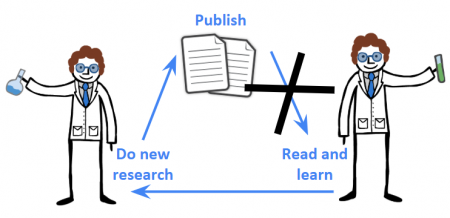We know that scientific reproducibility is a major problem. However, you may not know that in dollar costs alone, we face these grim stats:
- In the United States alone, the National Institutes of Health spends about $40 billion annually funding science
- From 60-90 percent of the experiments paid for by NIH grants aren’t reproducible
- This is a waste of some $24 billion to $36 billion annually
This reproducibility crisis most likely also affects your colleagues on campus, who must compete for NIH dollars, and justify the validity of their methods and results.
Everyone Shares Reproducibility Responsibility
It’s never too late to tackle this vast problem, and so we’re providing a free on-demand webinar, called “Librarians Improve Science,” recorded July 18. Our collaborators, Melissa Rethlefsen, associate dean at University of Florida, and Ana Patricia Aya, research services librarian at University of Toronto, covered:
- The pervasiveness of failed experiments
- The fact that the science we’ve been relying on is substandard
- How video resources can boost transparency/repeatability
- That researchers, students, funders and librarians must collaborate to solve the problem
Personal Costs Of Reproducibility Crisis
For scientists, this crisis has personal repercussions. Researchers can spend endless lab hours trying to repeat experiment protocols — without success. Ultimately, this can frustrate careers from the undergraduate level (adding potential years to the quest for a Ph.D.), to the principal investigators needing to innovate (costing millions of dollars in denied grant money).
Because we are the premier publisher of scientific video textbooks, articles, and educational content, we actively work to help further research, as well.

